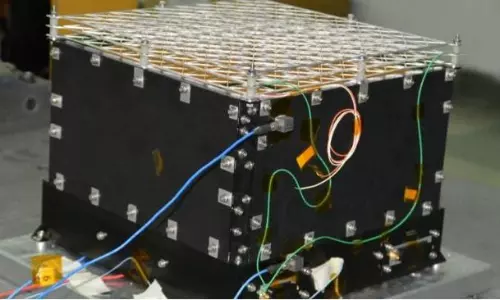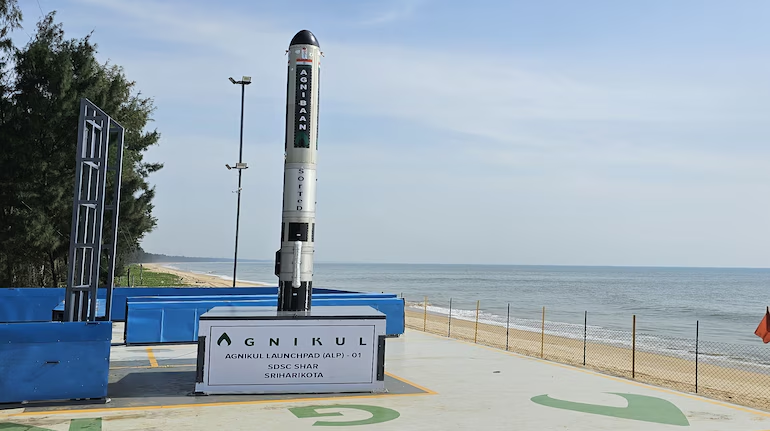
Agnikul Cosmos launches world's 1st rocket with fully 3D-printed engine
text_fieldsChennai: In a groundbreaking achievement, Agnikul Cosmos, a startup nurtured at IIT Madras, unveiled the world's first rocket to sport a single-piece three-dimensional (3D) printed engine. Named Agnibaan SOrTeD (SubOrbital Technological Demonstrator), this rocket marks India's pioneering foray into semi-cryogenic engine-powered launches, all achieved through indigenous design and manufacturing.
It was also launched from India's first privately developed launchpad called 'Dhanush' established by Agnikul at Sriharikota in Andhra Pradesh at 7.15 a.m. today. The launch pad is located inside ISRO's rocket port in Sriharikota. The test flight aims to demonstrate the in-house and homegrown technologies, gather crucial flight data, and ensure the optimal functioning of systems for Agnikul's orbital launch vehicle, the 'Agnibaan'.
"The Department of Space and ISRO congratulates Agnikul Cosmos on the successful launch of 'Agnibaan - SOrTeD'. The success involving many firsts including 3D printed semi-cryogenic engines, flight control systems, etc., demonstrate the prowess of indigenous design and innovation," said S. Somanath, Chairman, ISRO, in a statement.
"It motivates ISRO to support the Space startups and non-governmental entities for innovation and Atmanirbharata to create a vibrant space ecosystem in the country," he added. Agnibaan is a two-stage rocket with a capacity to carry up to 300 kg to a height of 700 km. The rocket engines are powered by liquid oxygen/kerosene.
It can access both low and high-inclination orbits and is completely mobile - designed for accessing more than 10 launch ports, as per the company. "We are proud to present India's first Semi-cryo rocket engine, which is also the world's most integrated single shot 3D printed piece. It signals the ability to rapidly assemble rockets that is unparalleled," said Satyanarayanan R Chakravarthy, Founding Advisor, Agnikul Cosmos and also the Head of the National Centre for Combustion Research and Development (NCCRD) at IIT Madras.
The private rocket maker is likely to launch an orbital mission by the end of the financial year of 2025 and is working with customers on flights starting regularly from CY 2025, the company said.
Prime Minister Narendra Modi said it is a "momentous occasion for India's space sector". "A remarkable feat which will make the entire nation proud!" he said in a post on social media platform X.com.
Source: IANS























